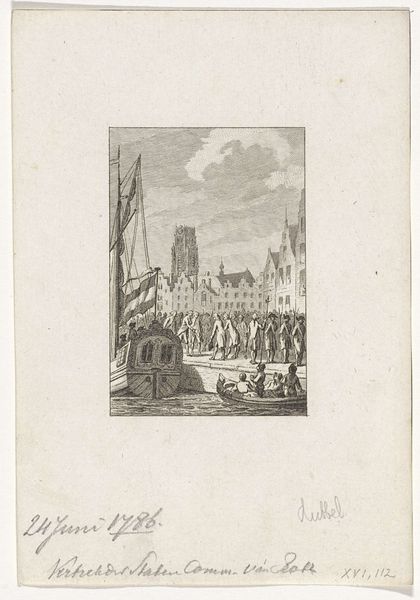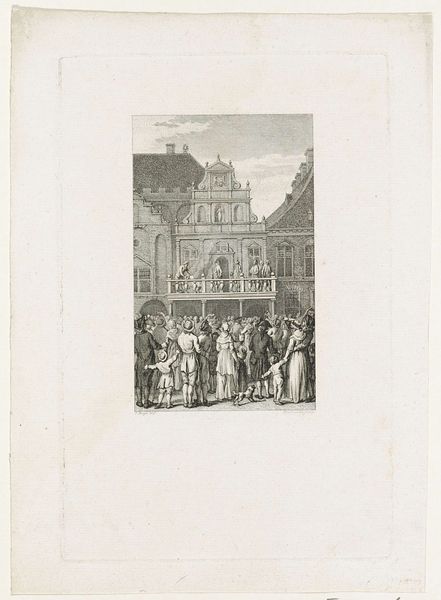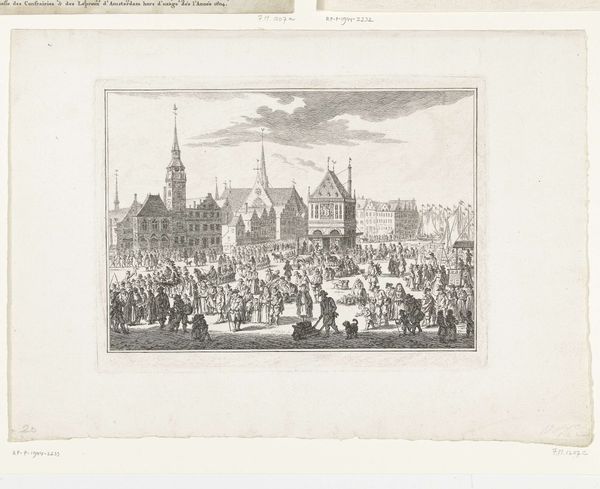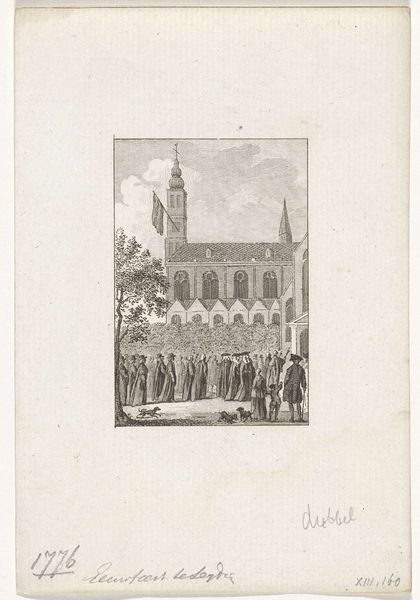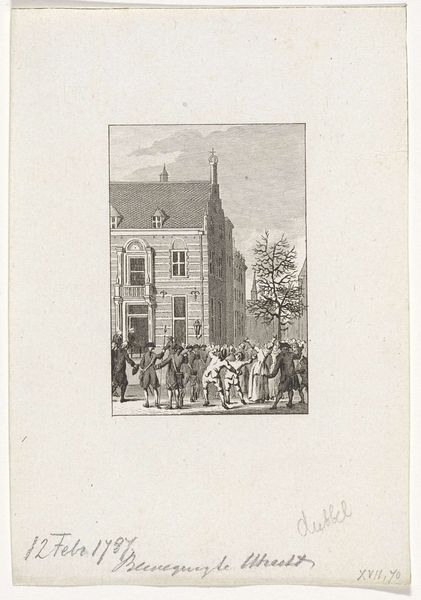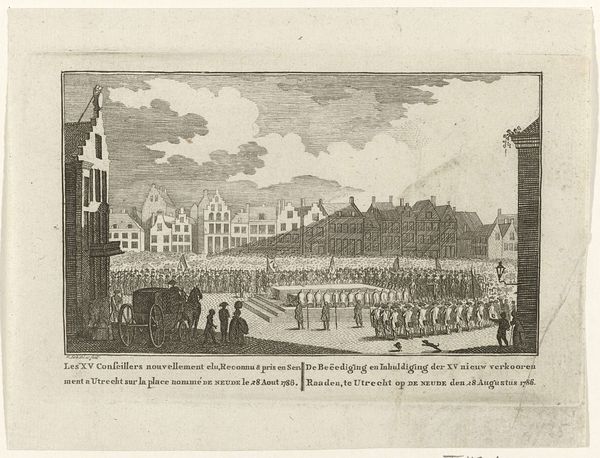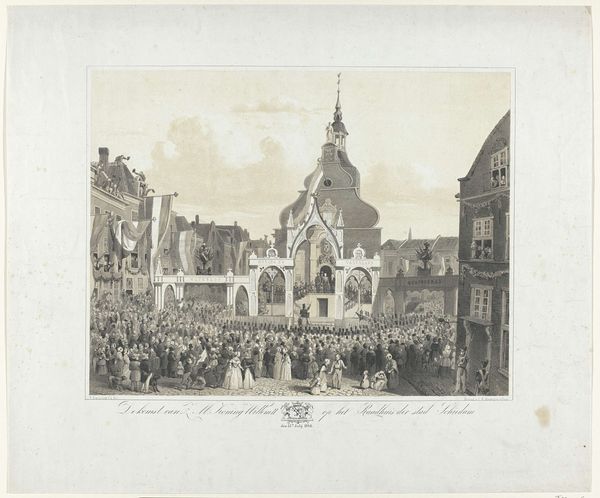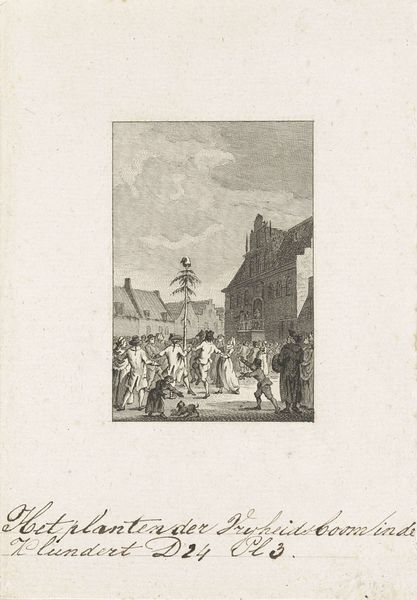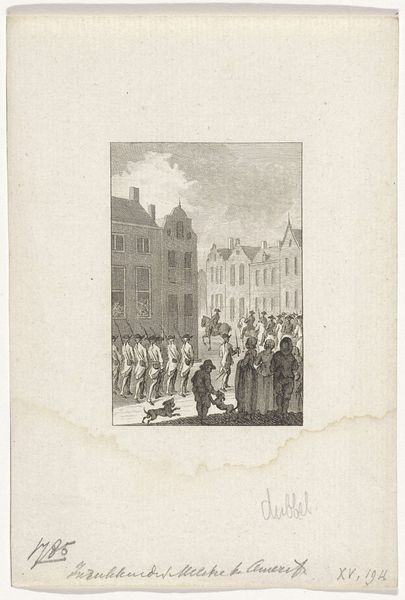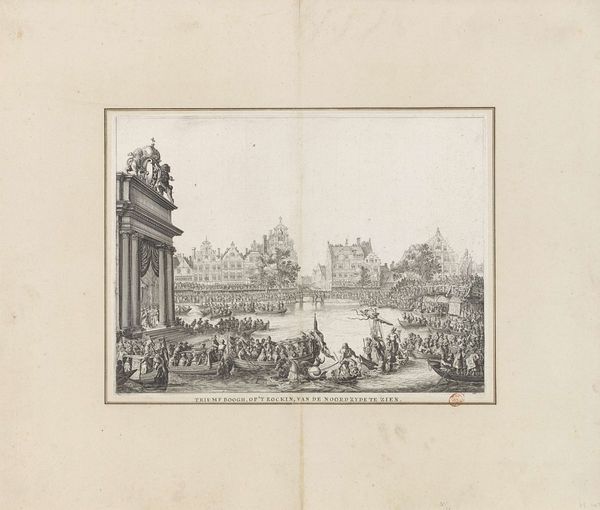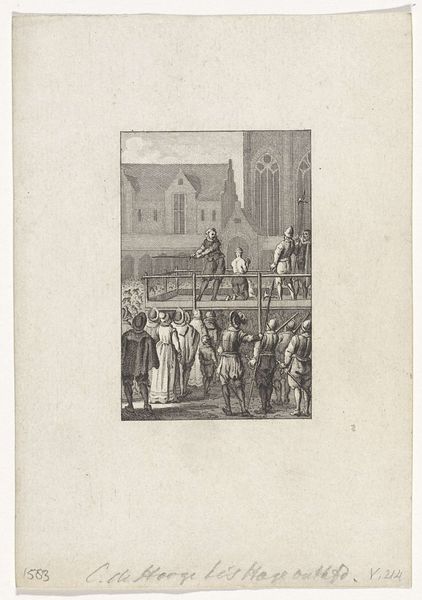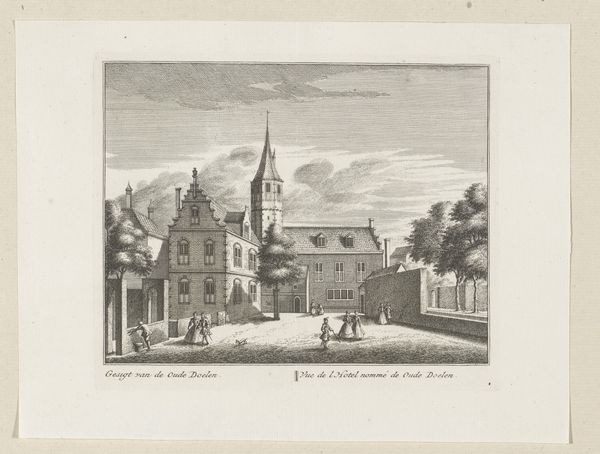
Begrafenisstoet voor Joachim Maurits baron van Kropff, 1793 1783 - 1795
0:00
0:00
reiniervinkeles
Rijksmuseum
Dimensions: height 160 mm, width 100 mm
Copyright: Rijks Museum: Open Domain
Editor: This engraving by Reinier Vinkeles, titled "Funeral Procession for Joachim Maurits Baron van Kropff," dates back to the late 18th century. There’s a somber feel to it, with the regimented lines of mourners against the backdrop of that imposing building. What strikes you most about this piece? Curator: I see a carefully constructed representation of power and societal structures. The baroque style, while seemingly traditional, here visualizes a very specific hierarchy. The baron's funeral wasn't just a personal event; it was a public display of his status and the power dynamics at play in that society. Consider the context – late 18th century, a period of enlightenment ideals, but also deeply entrenched aristocratic privilege. What does this contrast suggest to you? Editor: I guess it shows how ingrained the old systems were, even as new ideas were circulating. The presence of the military adds to that feeling, right? Curator: Precisely. Military presence underscores authority. Ask yourself, who gets a funeral like this? Who is excluded? How might those outside the elite perceive such a display? Think about issues of representation, or lack thereof, within this image, and the political statement it implicitly makes about the era. How does the 'cityscape' background contrast to this funerary march of solemn looking mourners, creating different moods? Editor: It does highlight the stark contrast between everyday life and this grand display of mourning for someone powerful. Curator: And who is controlling this narrative through this "history-painting," what is the engraver suggesting or celebrating through a funeral for someone in a position of power and stature? Also who are the intended consumers of such printed material? It reveals that funerals are highly formalized public events where certain traditions had to be recognized and duly enacted. The composition highlights this. Editor: It’s been really interesting to consider how even a funeral procession can reflect broader societal power structures. I definitely see the piece in a new light now. Curator: Indeed, by exploring such events we unpack hidden ideologies embedded in the art itself and encourage meaningful dialogue around historical contexts.
Comments
No comments
Be the first to comment and join the conversation on the ultimate creative platform.
